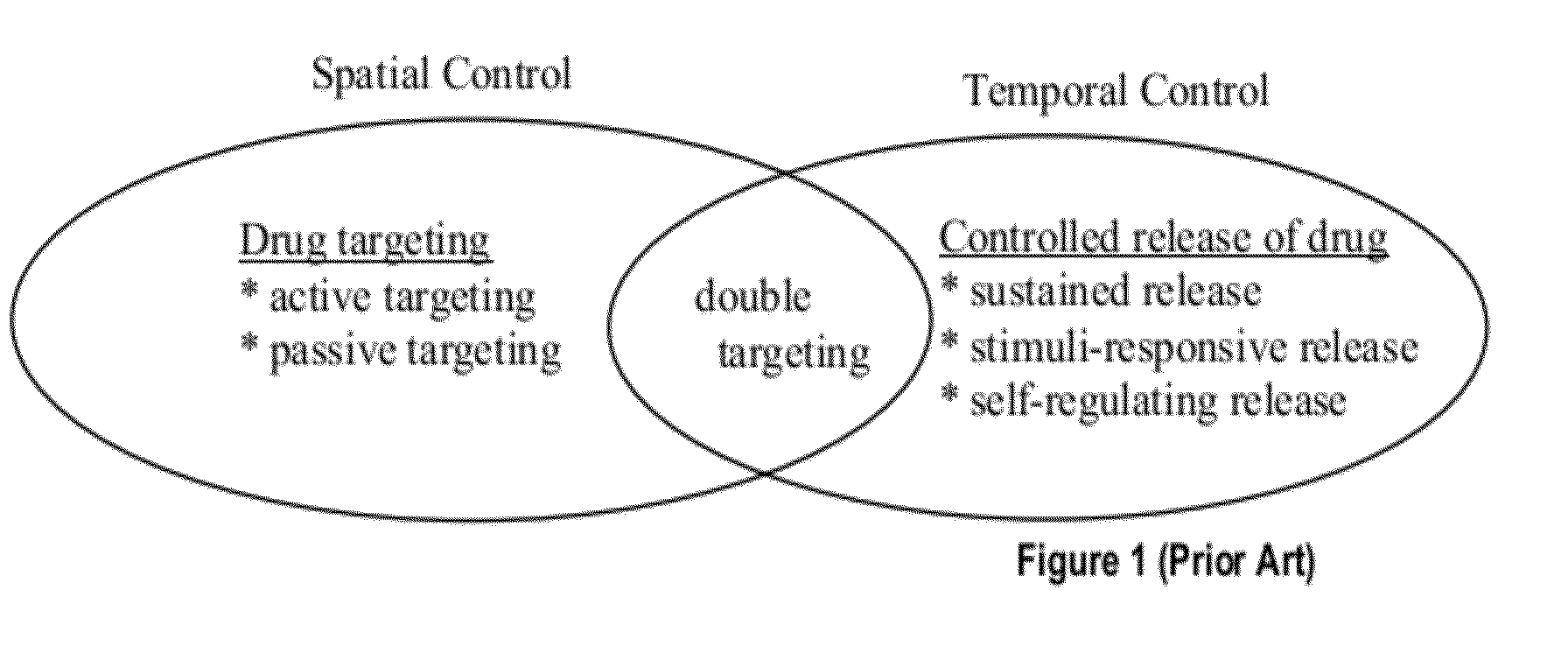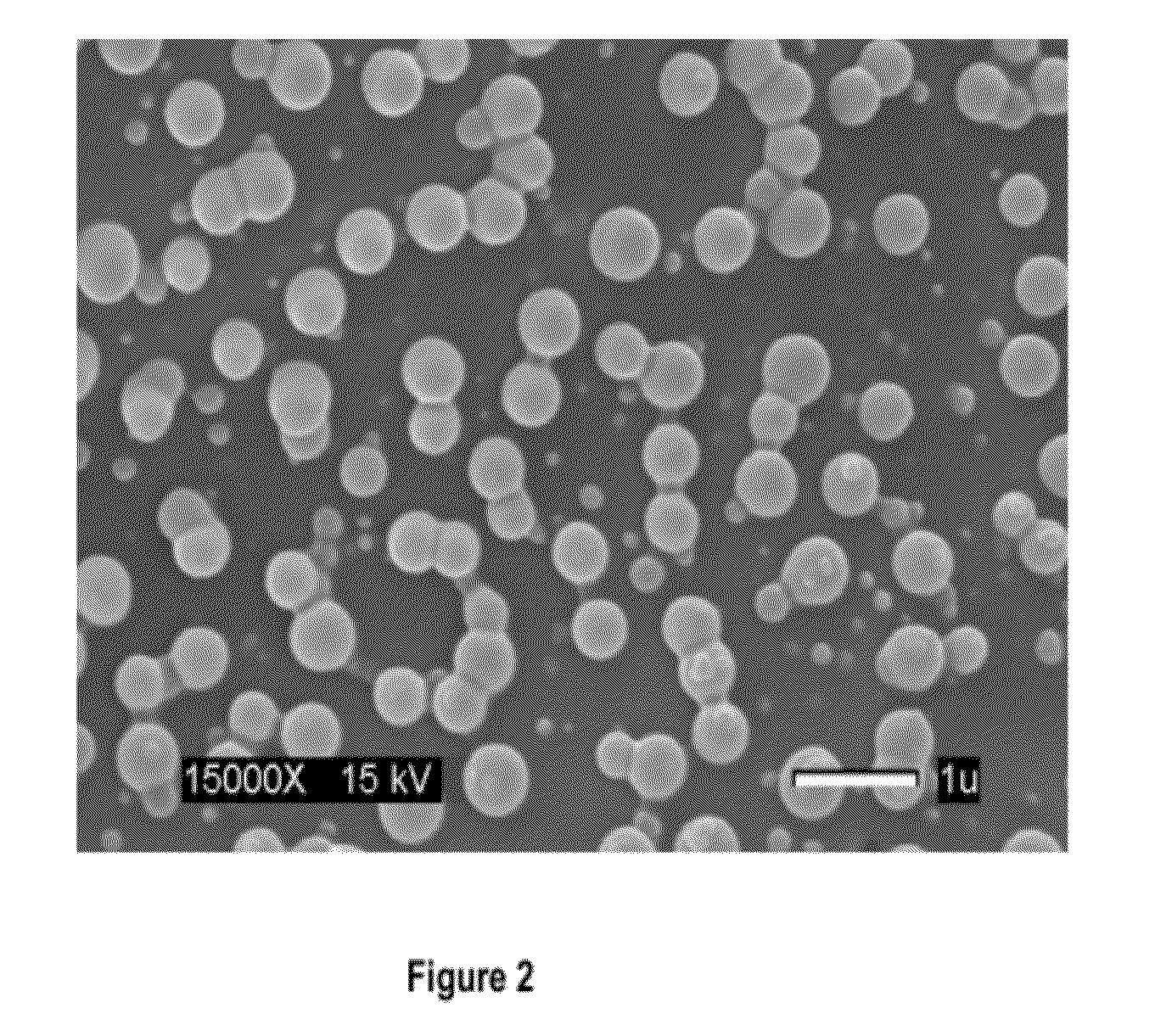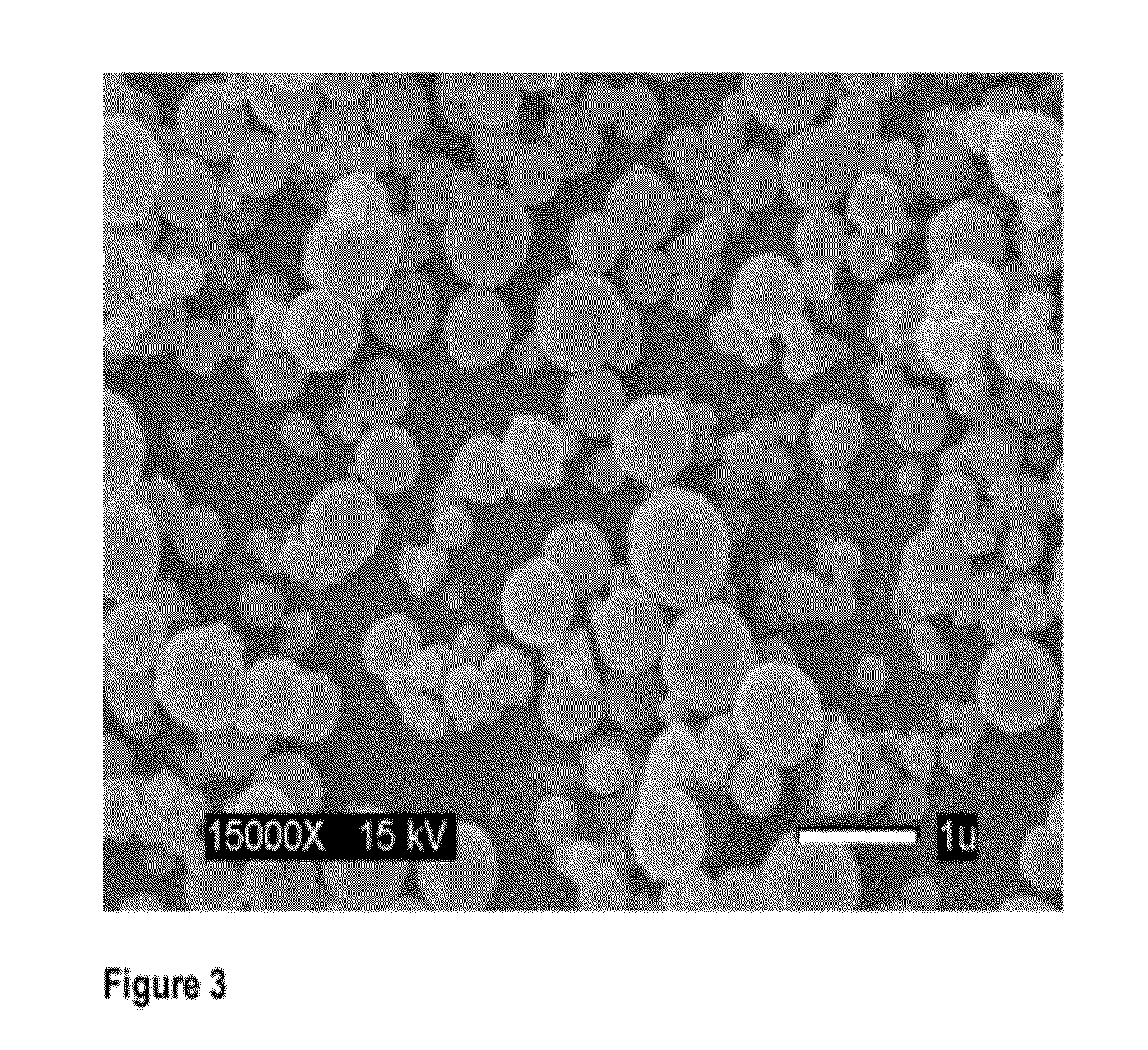Stealth polymeric particles for delivery of bioactive or diagnostic agents
a bioactive or diagnostic agent and polymer technology, applied in the field of production and use of polymeric particles, to achieve the effect of effective delivery to a target and minimizing adverse side effects
- Summary
- Abstract
- Description
- Claims
- Application Information
AI Technical Summary
Benefits of technology
Problems solved by technology
Method used
Image
Examples
example 1
Synthesis of Hydrolysable Crosslinker (N,O-dimethylacryloyl hydroxylamine)
[0149]The crosslinker, N,O-dimethacryloylhydroxylamine was synthesized as follows.
[0150]To a solution of hydroxylamine hydrochloride (9.0 g) in 72 ml of pyridine, methacrylol chloride (27 ml) was added dropwise with stirring. The temperature of the mixture was kept below 30° C. The reaction mixture was left at room temperature for 10 hours. It was dissolved in 150 ml chloroform and then neutralized with 48 ml HCl. The product was extracted with distilled water (4×150 ml), dried over magnesium sulfate and then dissolved in ether, followed by filtration, drying and recrystallization.
[0151]The resulting crosslinker, N,O-dimethacryloylhydroxylamine was characterized by 1H NMR analysis and melting point determination to confirm its identity and purity. The data obtained {m.p.: 55-56° C.; 1H NMR (400 MHz, CDCl3): (C8H11NO3) δ=2.04 (s, 3H), 2.08 (s, 3H) 5.54, 5.8 (s, 2H), 5.9, 6.38 (s, 2H), 9.25 (s, 1H)}.
Characteriza...
example 2
Synthesis of Nanospheres
[0153]Two different initiator systems were used; (i) radical generation by thermal decomposition system—AIBN and (ii) the radical generation by redox system—BPO and NPDEA. The initiator concentration was kept constant at 1 mol % of the total polymerizable components (Table 3.1 and 3.2). The empty nanospheres are therefore referred to as PEG-PMMA (M:X)n, where M and X represent the mmole of MMA and XL the mol % of the crosslinker based on the concentration of MMA and PEG-MA respectively and n denotes the initiator system and is either be a (for AIBN) or r (for the redox system). These notations can be used in defining the resulting blank nanospheres. The drug-loaded nanospheres would be identified as PEG-PMMA (DDL)n where D represents the drug used and is either P denoting paclitaxel or Z denoting Zapp88. The notation n remains as previously defined representing the type of initiator system and would either be a (for AIBN) or r (for the redox initiators). The ...
example 3
Synthesis of Empty Hydrolyzable Crosslinked Poly(ethylene glycol-co-methyl Methacrylate) {PEG-PMMA (M:X)a} Nanospheres
[0155]A 42 factorial experiment replicated twice was designed and carried out by varying the crosslinker concentration (factor 1 at four levels) and the concentration of the methylmethacrylate (factor 2 at four levels) as shown in Table 1.1. For all the polymerization reactions, the amount of PEG-MA macromonomer was kept constant at 0.1 mmol and the initiator was held constant at 1% of the polymerizable components. The nanospheres were synthesized by the free radical dispersion polymerization technique. Into a round bottom flask equipped with a magnetic stirrer and containing a binary solvent system (ethanol:water in appropriate ratio (1 to 100 mL), MMA (6.0-12.0 mmol), PEG-MA (0.1 mmol), crosslinker (1-4 mol %)] and AIBN (1%) were added. The flask was sealed and nitrogen gas was bubbled through the mixture before the content was heated to 60° C. The polymerization w...
PUM
 Login to View More
Login to View More Abstract
Description
Claims
Application Information
 Login to View More
Login to View More - R&D
- Intellectual Property
- Life Sciences
- Materials
- Tech Scout
- Unparalleled Data Quality
- Higher Quality Content
- 60% Fewer Hallucinations
Browse by: Latest US Patents, China's latest patents, Technical Efficacy Thesaurus, Application Domain, Technology Topic, Popular Technical Reports.
© 2025 PatSnap. All rights reserved.Legal|Privacy policy|Modern Slavery Act Transparency Statement|Sitemap|About US| Contact US: help@patsnap.com



